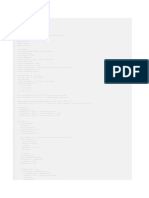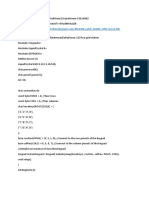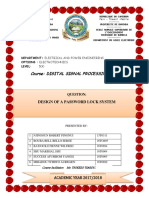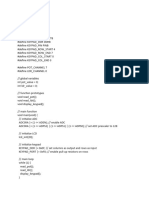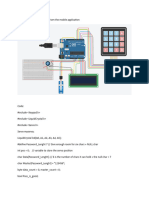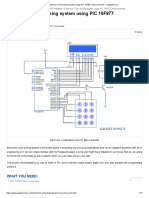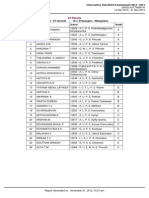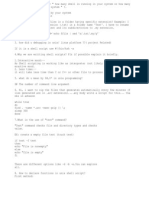0% found this document useful (0 votes)
53 views3 pagesSimple Security
This document contains an Arduino sketch for a password-protected door lock system using a keypad and an LCD. The system allows users to enter a password, and if the correct password is entered, it unlocks the door for 9 seconds before locking again. It also includes visual and audio feedback for incorrect password entries.
Uploaded by
Rahul MakwanaCopyright
© © All Rights Reserved
We take content rights seriously. If you suspect this is your content, claim it here.
Available Formats
Download as PDF, TXT or read online on Scribd
0% found this document useful (0 votes)
53 views3 pagesSimple Security
This document contains an Arduino sketch for a password-protected door lock system using a keypad and an LCD. The system allows users to enter a password, and if the correct password is entered, it unlocks the door for 9 seconds before locking again. It also includes visual and audio feedback for incorrect password entries.
Uploaded by
Rahul MakwanaCopyright
© © All Rights Reserved
We take content rights seriously. If you suspect this is your content, claim it here.
Available Formats
Download as PDF, TXT or read online on Scribd
/ 3





